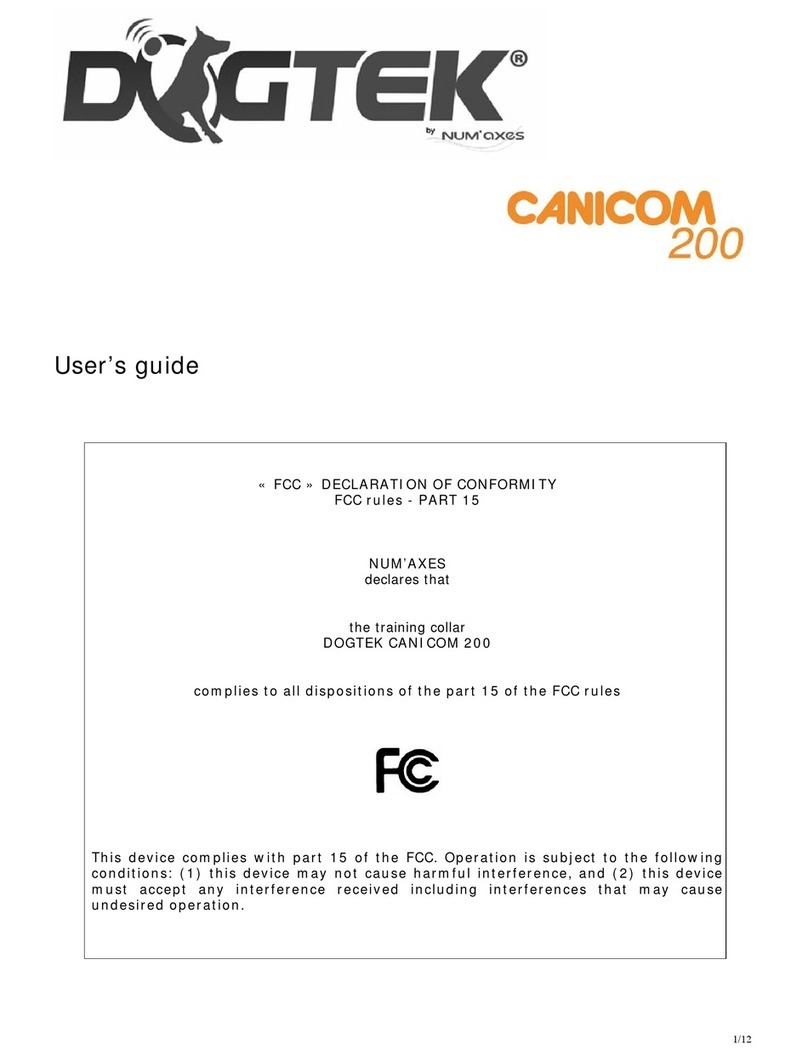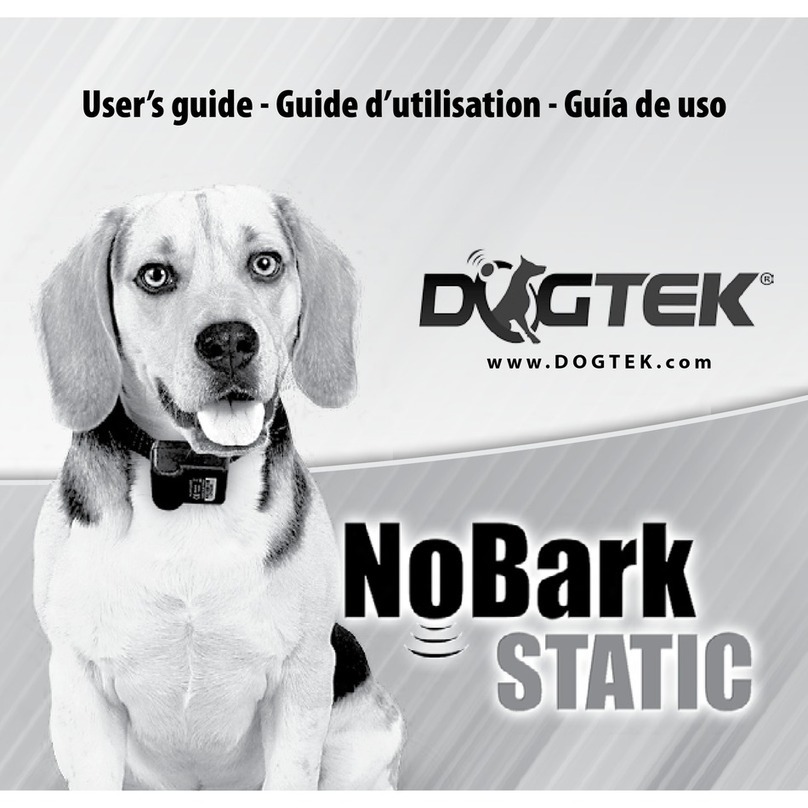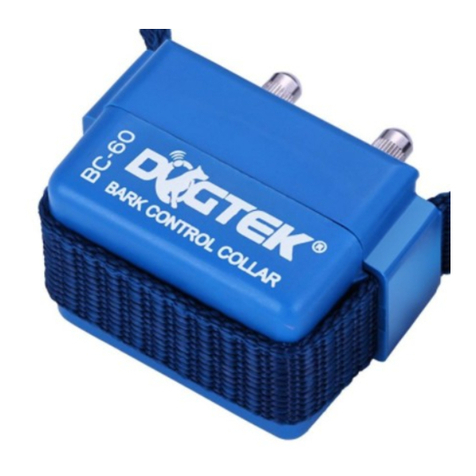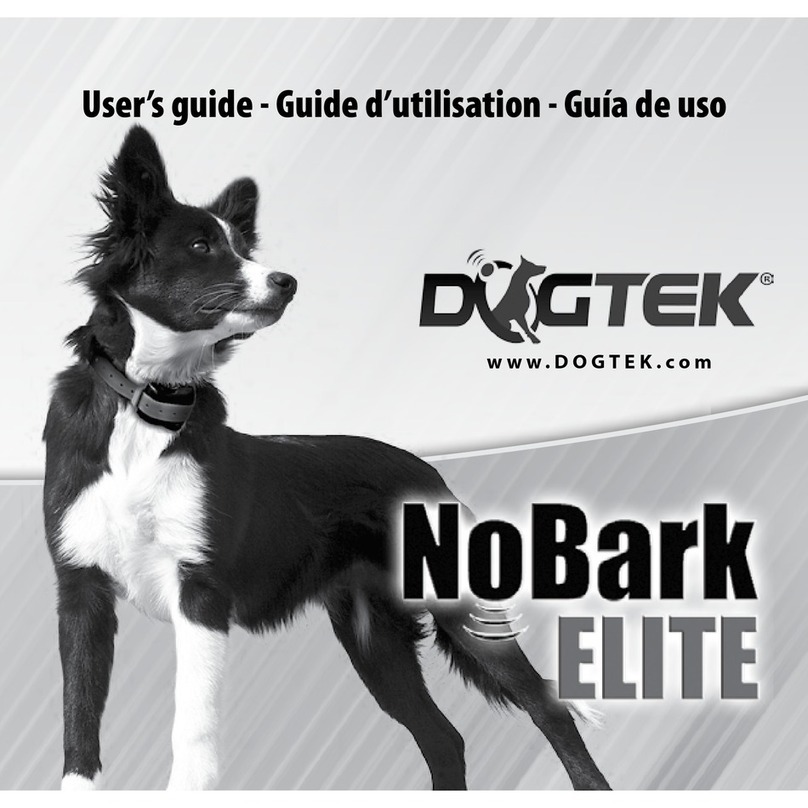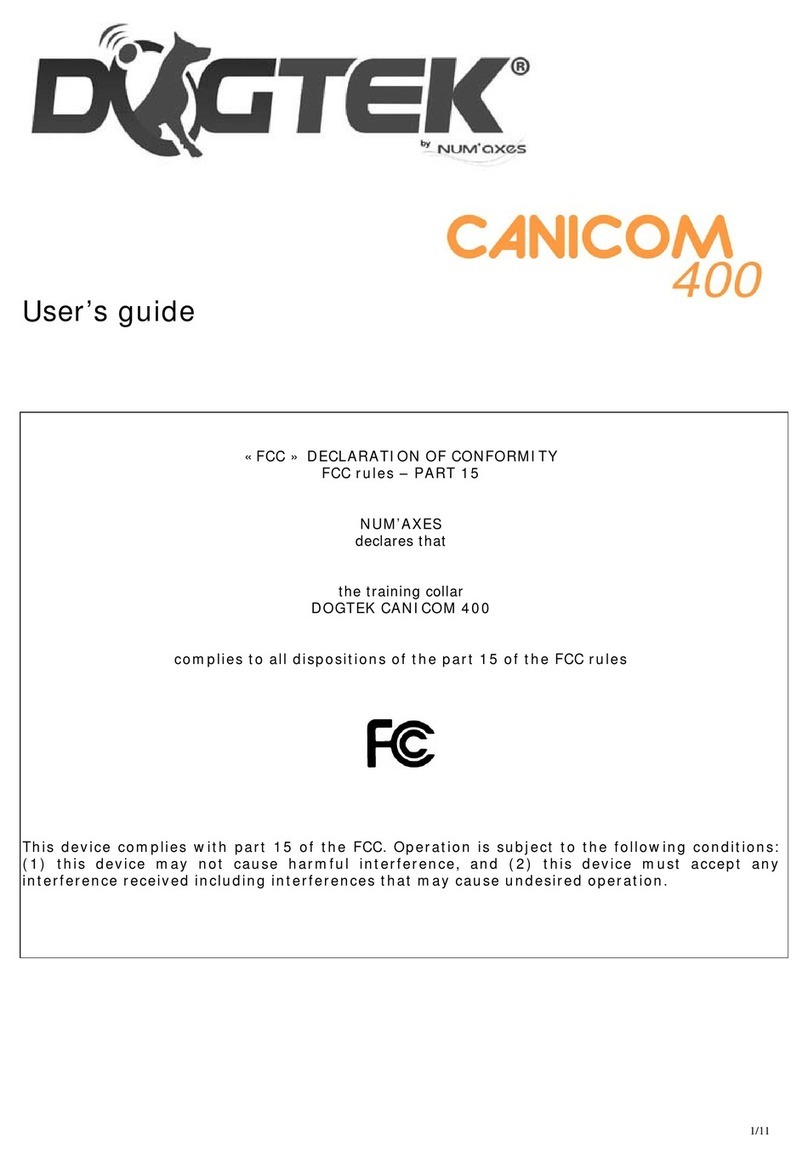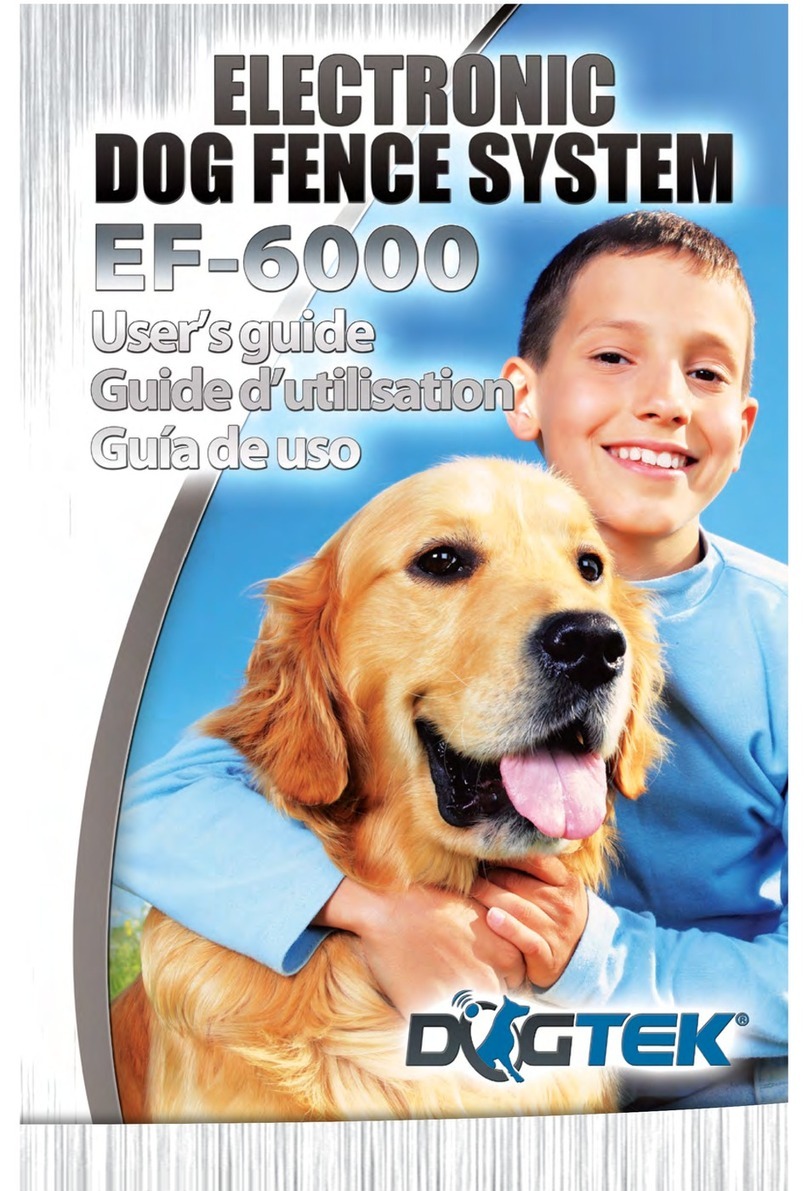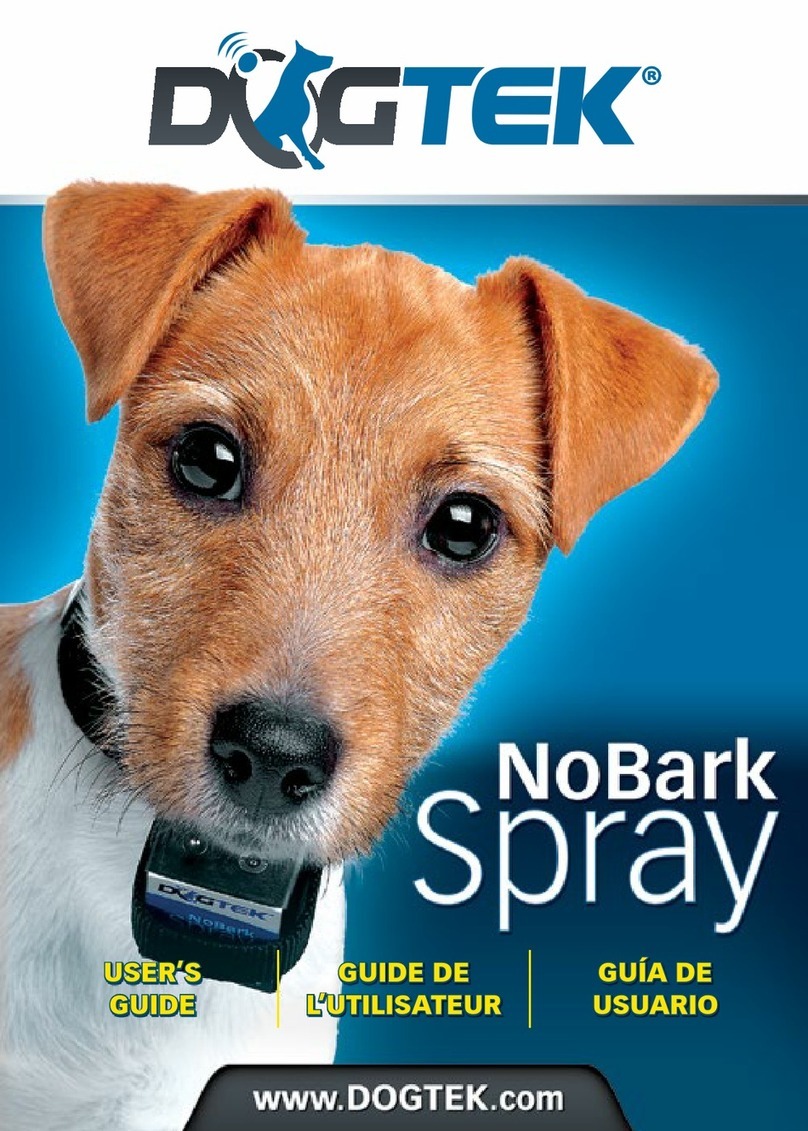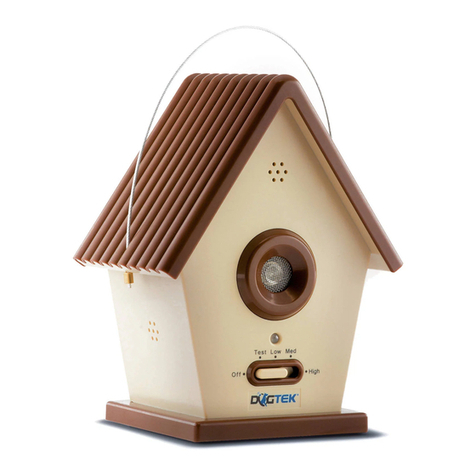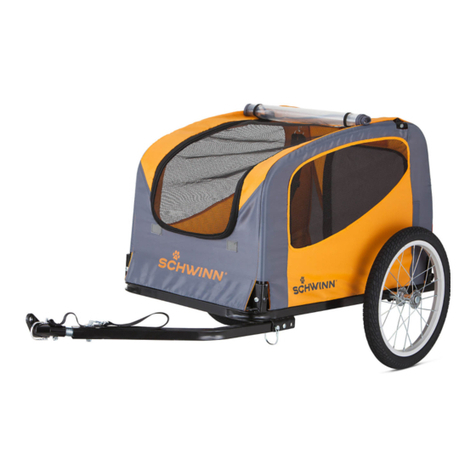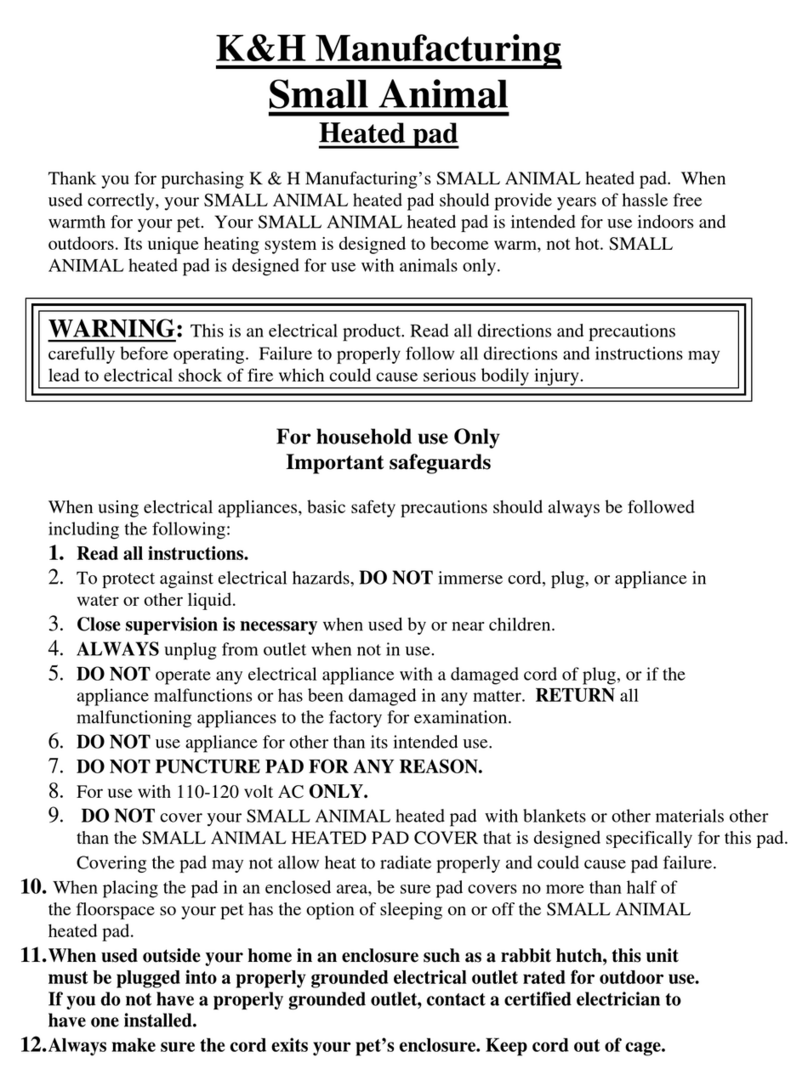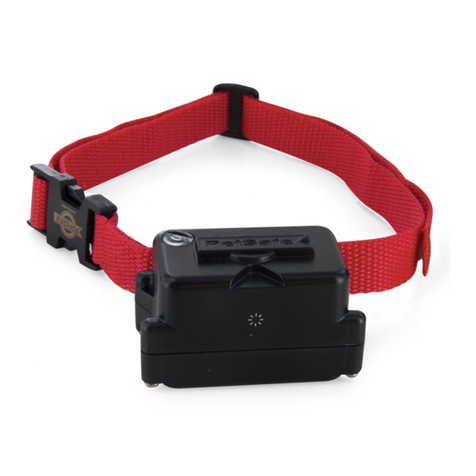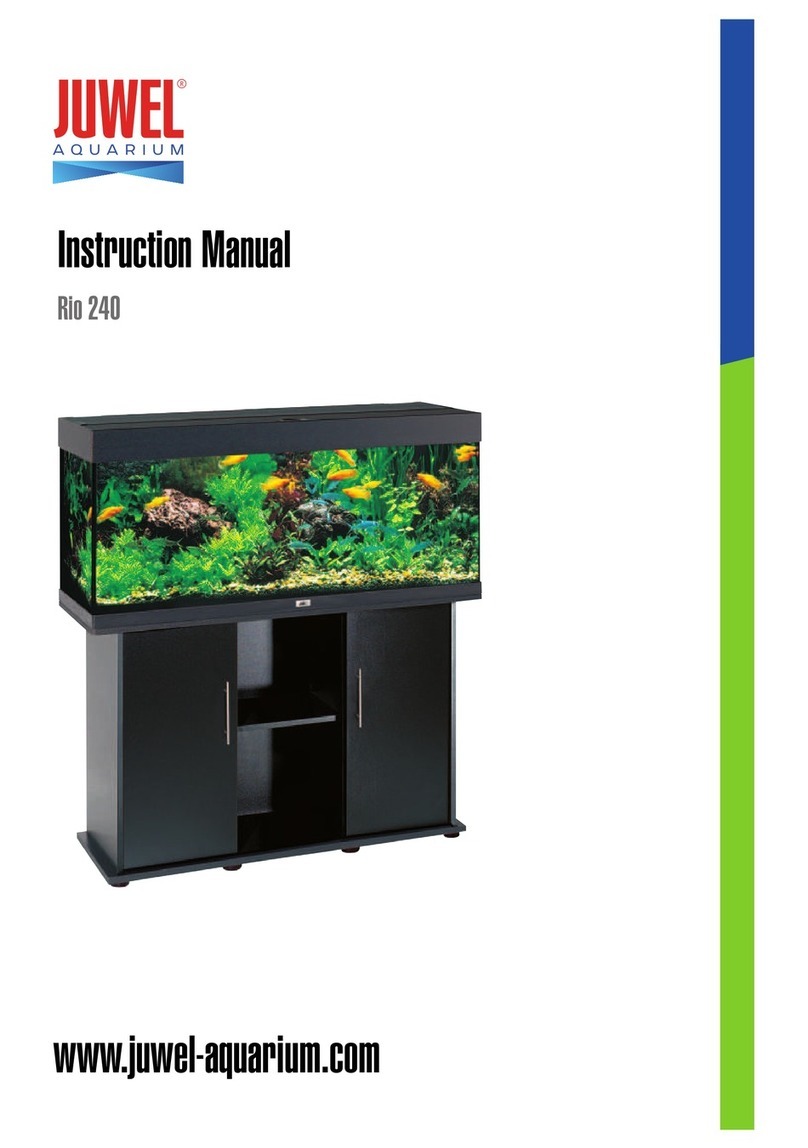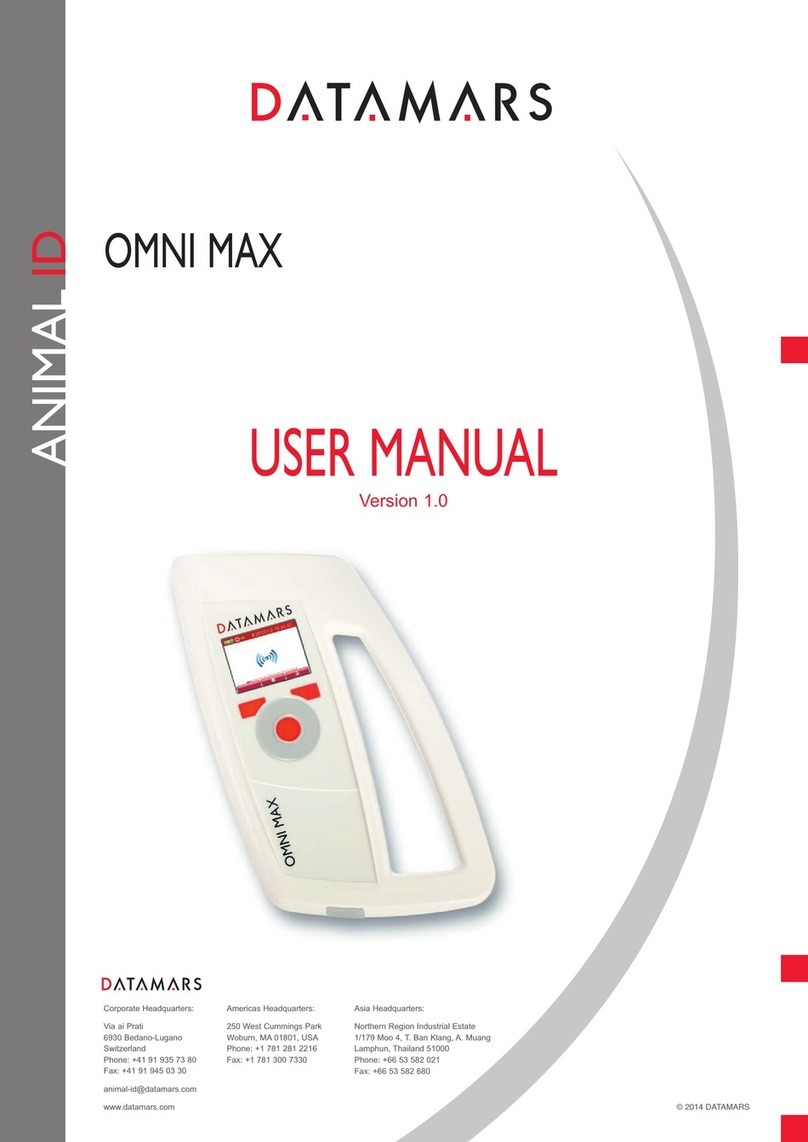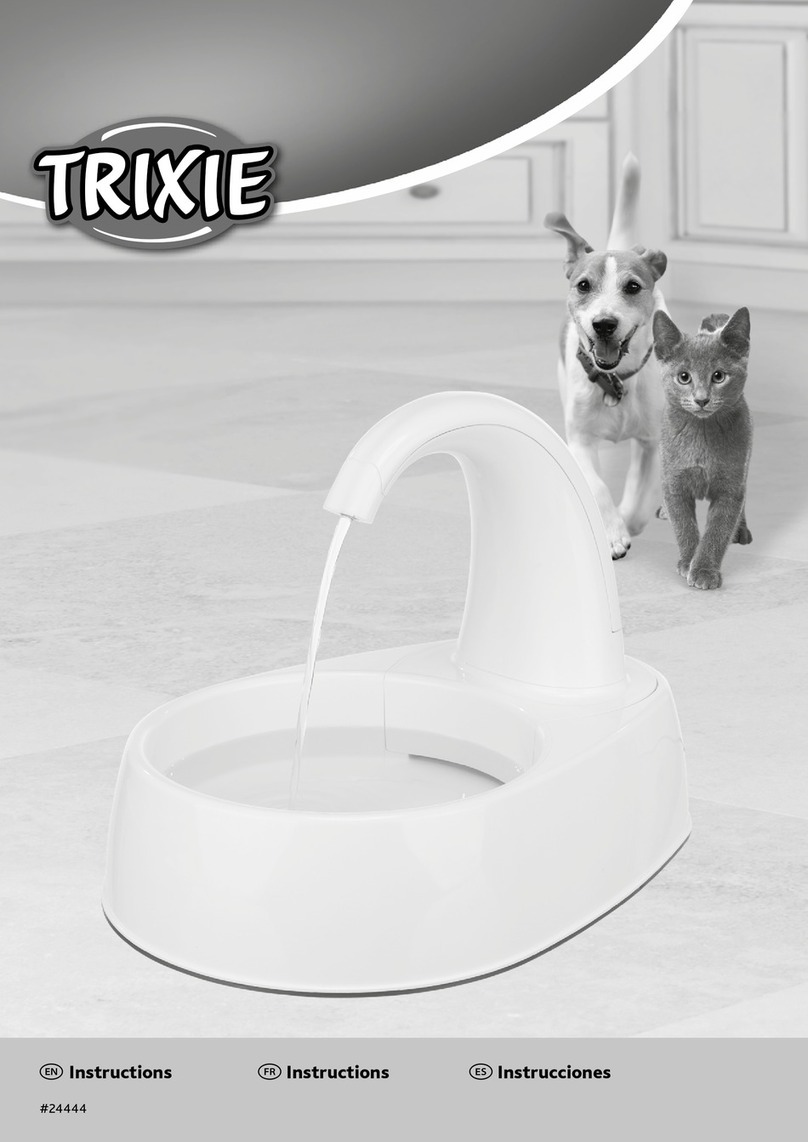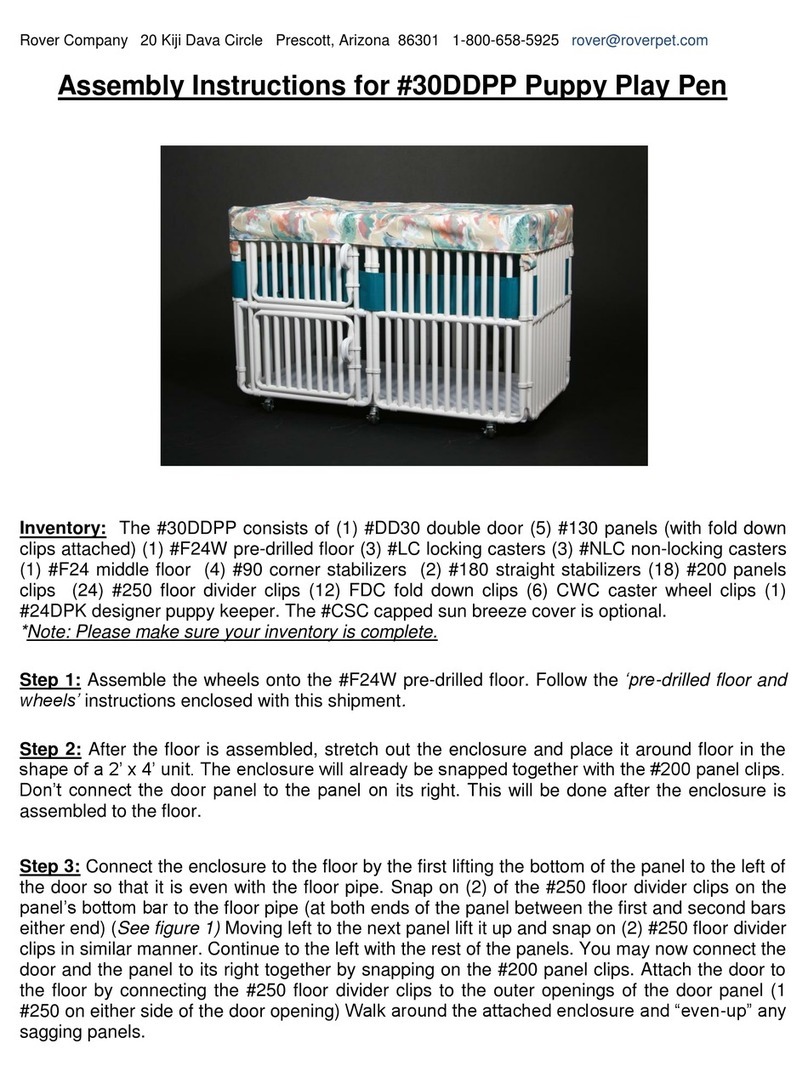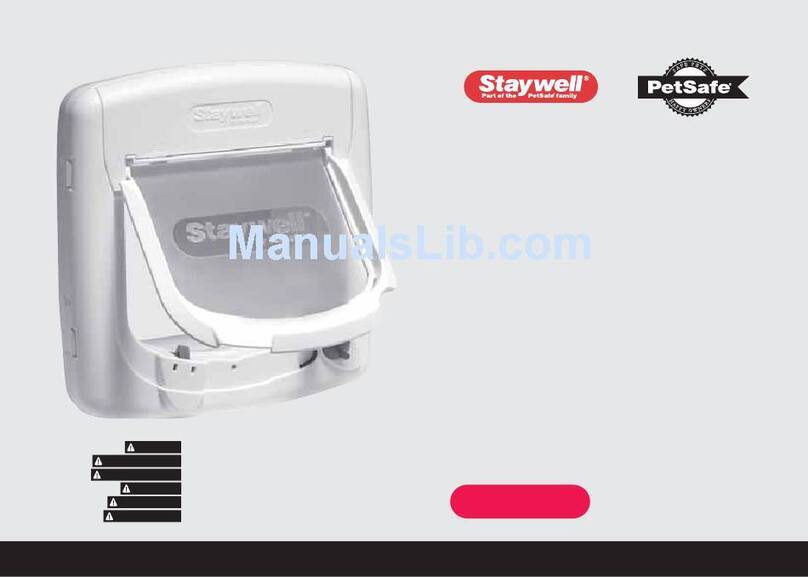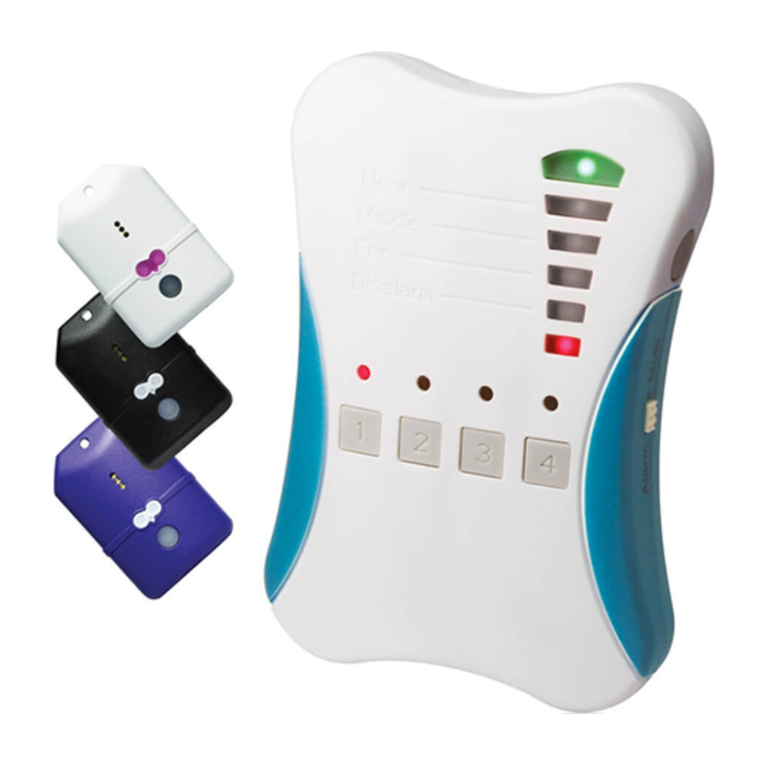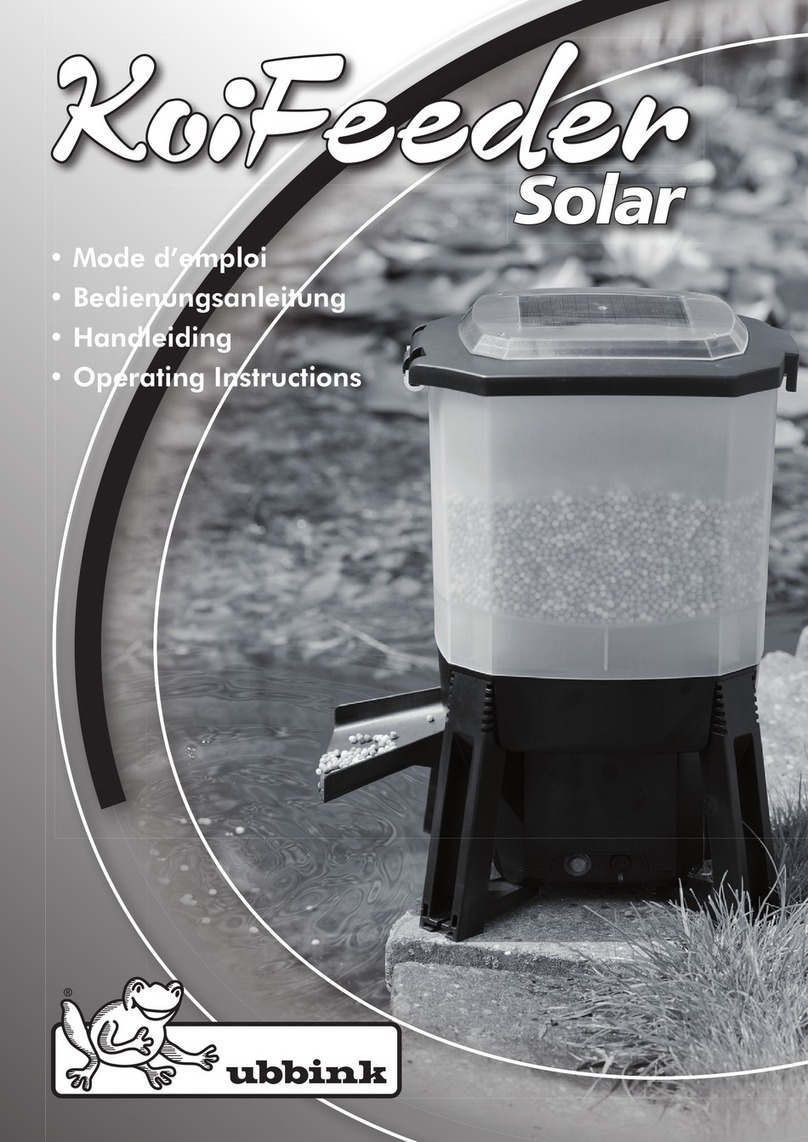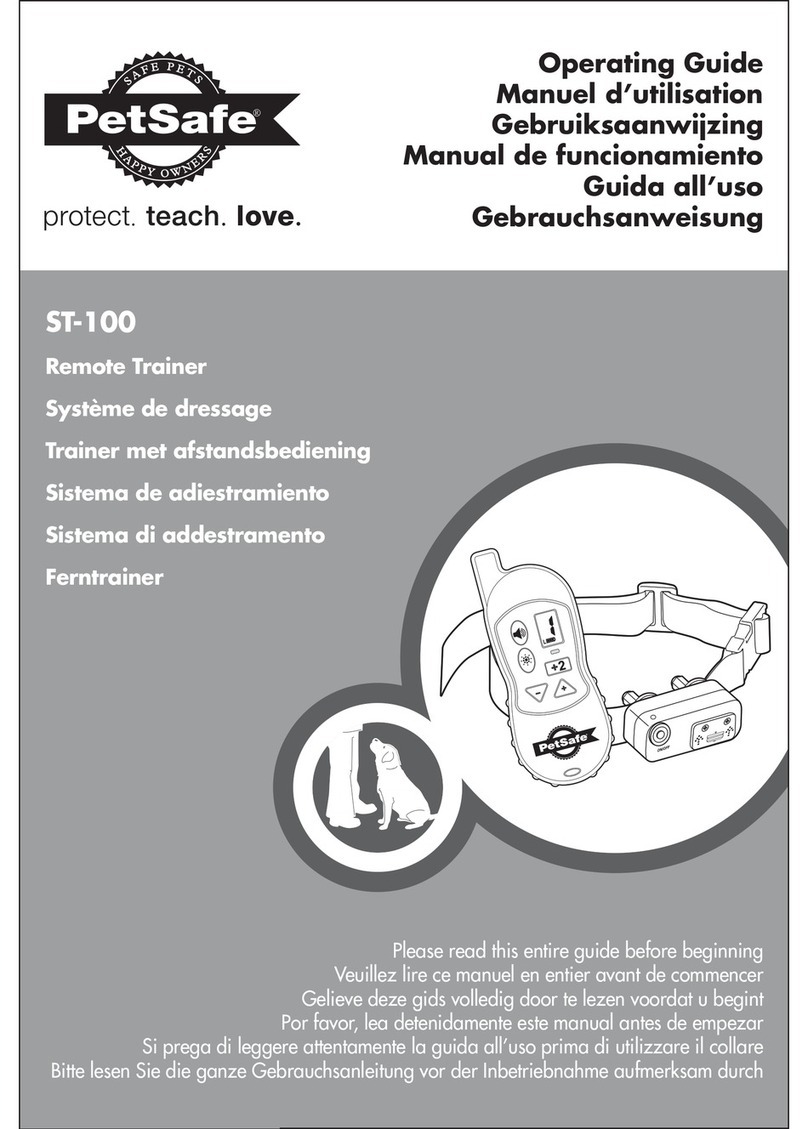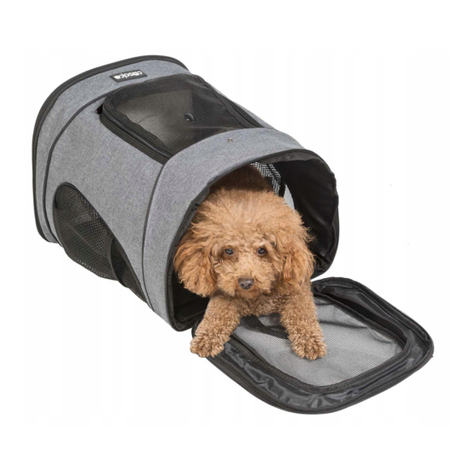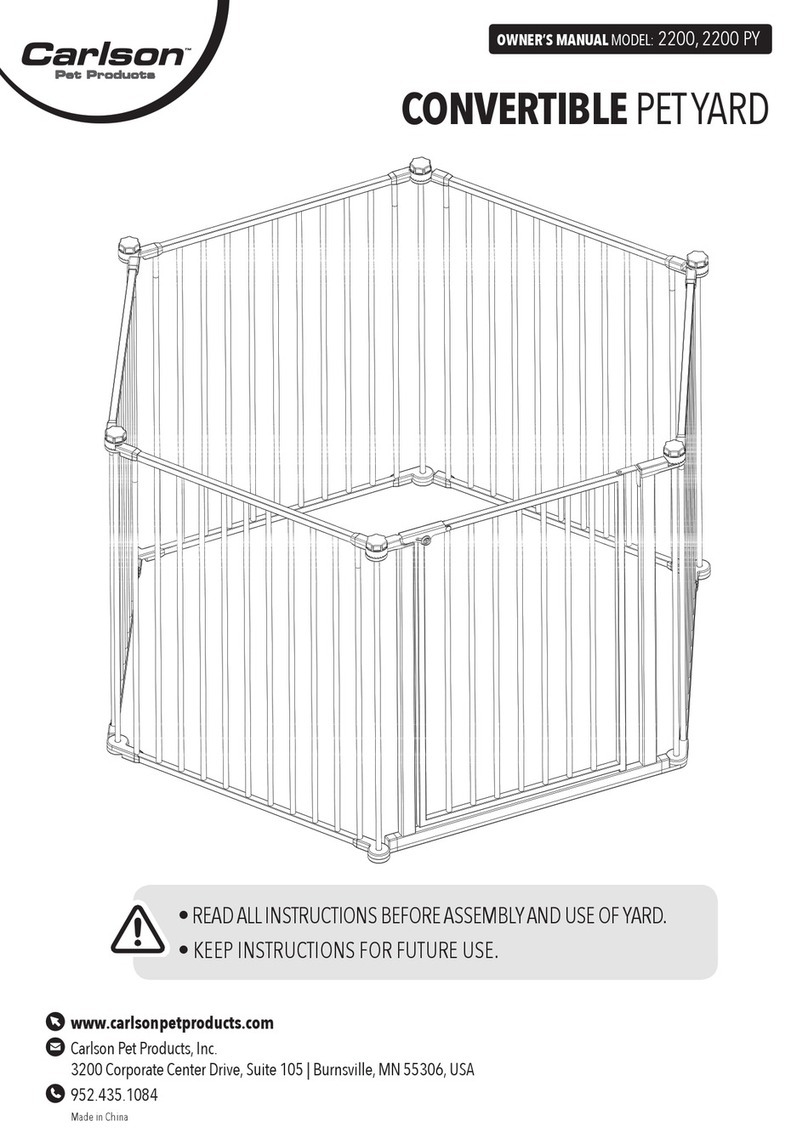
3
INTRODUCTION
The obedience between a dog and his owner has
existed since the beginning of time. Nonetheless,
a dog is often guided by his natural instincts and
breaks the rules his owner has taught him, like
straying away and causing trouble such as: damage
to owerbeds, jumping into swimming pools, etc.
More seriously, he may be the victim or the cause of
before road accident.
The EF-4000 pet fencing system is a modern
and highly eective system enabling you to keep
one or more dogs in complete freedom within a
perimeter, fenced or unfenced, you have dened.
CONTENTS OF THE EF4000
• collar tted with short contact points and a
strap
• lithium Battery CR2 3V
• transmitter with AC power adapter
• 500 feet roll of antenna wire
• connection kit ( 2 gel-lled splice capsules and
2 wire nuts)
• set of 50 boundary ags
• neon test lamp
• pair of long contact points
• User’s guide
HOW THE PET FENCING
SYSTEM WORKS
You can dene your dog’s play area by installing a
wire, called antenna wire, around the authorized
perimeter. This wire placed on the ground, buried
or raised on an existing fence carries a radio signal
from the transmitter.
When your dog, wearing a receiver collar,
approaches this wire, he is warned by beep sounds
that he is too close to an area where he is not
allowed; then if he carries on, static stimulations will
be emitted by the collar. Your dog will have to leave
the unauthorized area to stop the stimulations and
beep sounds.
An unlimited number of receiver collars can
be used with one transmitter: you can keep as
many dogs as you wish safely in the same area.
The EF-4000 pet fencing system has been
designed to give you complete satisfaction with an
antenna wire up to a maximum length of 2000 feet
(equivalent to 5 acres).
INSTALLING THE PET
FENCING SYSTEM
1. Transmitter
The transmitter must be installed indoors or
in a sheltered dry location: the transmitter can
withstand changes in temperature but will be
damaged by water. Make sure the transmitter
is correctly xed (for example screw it to a wall).
Install the transmitter in a garage or garden
shed near an electrical outlet.
2. Antenna wire
For the system to operate, the wire must
be connected to the transmitter and form a
continuous loop from the transmitter and back
again. The outward and inward wires must be
spaced at least 5 feet apart to avoid cancelling
the signal.
From the transmitter, unroll the wire around the
perimeter you wish to protect. To run the wire
from your garage or garden shed, pass it through a
window, door or similar.
The wire can be placed on the ground, buried
(maximum: 4 inches deep) or xed to a non-metallic
existing fence or wall (the best height is your dog’s
neck height). If you plan on burying the wire, make
sure your installation is functioning properly before
doing so. You can protect the wire by running it
through a PVC pipe or a garden hose.
The wire must not be taut as variations in
temperature may cause it to expand or contract.
In the corners, do not make any right angles but
rounded corners with a large radius.

